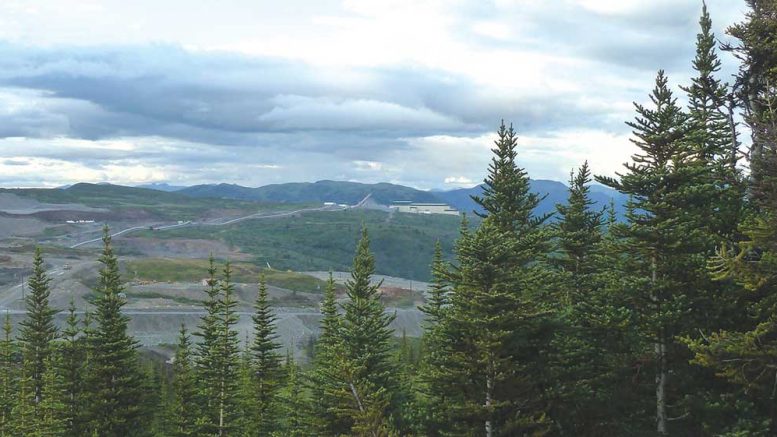A strike at Imperial Metals’ (TSX: III) Mt. Polley copper-gold-silver mine in central B.C. and lower copper recoveries at its Red Chris copper-gold mine in northwestern B.C. in the second quarter will cut production targets this year, president and CEO Brian Kynoch said during a conference call.
The company has also postponed expenses on a number of capital projects budgeted for the first half of 2018 to the second half of the year, or into 2019.
Imperial recorded an adjusted net loss in the second quarter of $27.8 million (24¢ per share), compared with an adjusted net loss of $21.8 million (23¢ per share) in the comparative 2017 quarter. Revenues in the June quarter fell 24.9% year-on-year from $106.7 million to $80.1 million.
At the end of June, Imperial had $15.5 million in cash, in addition to $15.6 million in available capacity for future draws under a senior-secured revolving credit facility, and $10 million undrawn on a 2017 line of credit loan facility.
A working capital deficiency of $791 million in the June quarter includes debt of $723 million related to the senior credit facility and the second line of credit facility, which mature in the fourth quarter of 2018, and the senior unsecured notes, which mature in March 2019, Andre Deepwell, the company’s chief financial officer, told analysts and investors on the call.

The processing plant at Imperial Metals’ Red Chris copper-gold mine in northwestern British Columbia, 80 km south of Dease Lake. Credit: Imperial Metals.
“We are in discussions with our lenders and continue to work on financing alternatives and solutions for this debt,” Deepwell noted. “However, we cannot make any definitive comments at the present time. During 2018, payment of interest for certain debt facilities is being paid in common shares of the company until Dec. 31, 2018, resulting in cash savings of approximately $16 million per annum.”
CIBC has cut its 12- to 18-month target price on the stock to 90¢ from $1.90 per share, and reiterated its “underperform” rating on the company.
In a research note to clients, CIBC analysts Oscar Cabrera and Raphael de Souza observe that “operating execution at the Red Chris mine is of utmost importance for Imperial, given its debt maturity schedule (fourth-quarter 2018 and first-quarter 2019) and the asset’s importance to the company’s future.” The analysts estimate that Red Chris accounts for 82% of Imperial’s operating and development net asset value.
Chris accounts for 82% of Imperial’s operating and development net asset value.
At Red Chris, metal production in the June quarter was 11.51 million lb. copper and 8,614 oz. gold, down 25% and up 40%, respectively, from the second quarter of 2017.
Metal recoveries were 72.96% copper and 43.94% gold, a decrease of about 4% and an increase of about 16%, respectively, from the comparable 2017 quarter.
Throughput at Red Chris was down from 2.7 million tonnes in the second quarter of 2017 to 2.52 million tonnes in the 2018 quarter.
The rate was impacted by the failure of a trunnion bearing in the ball mill, resulting in six days of mill downtime in May.
CEO Kynoch said a recently acquired, $15-million PC7000 electric excavator that is being commissioned — about a month later than planned, because the shovel took longer than expected to arrive — should help increase mining productivity at Red Chris.
“As soon as the new excavator is up and running, and that should be in the next couple of days, and we run it for a week or two to prove that its capacity will increase our mining productivity, we’ll generate a new mining plan for the rest of the year, and we’ll look at adjusting that plan to try and reach the higher grade sooner,” Kynoch said. “And then, when we have all that done, we’ll give an update on our production targets.”
Meanwhile at Mt. Polley, where a strike lasted from May 23 until Aug. 2, 1.58 million tonnes were milled in the second quarter, down from 1.69 million tonnes in the same quarter of 2017. Mt. Polley produced 3.82 million lb. copper, down from 5.6 million lb. in the year-earlier period.


Be the first to comment on "Imperial Metals records $28M loss on strike, operating issues"